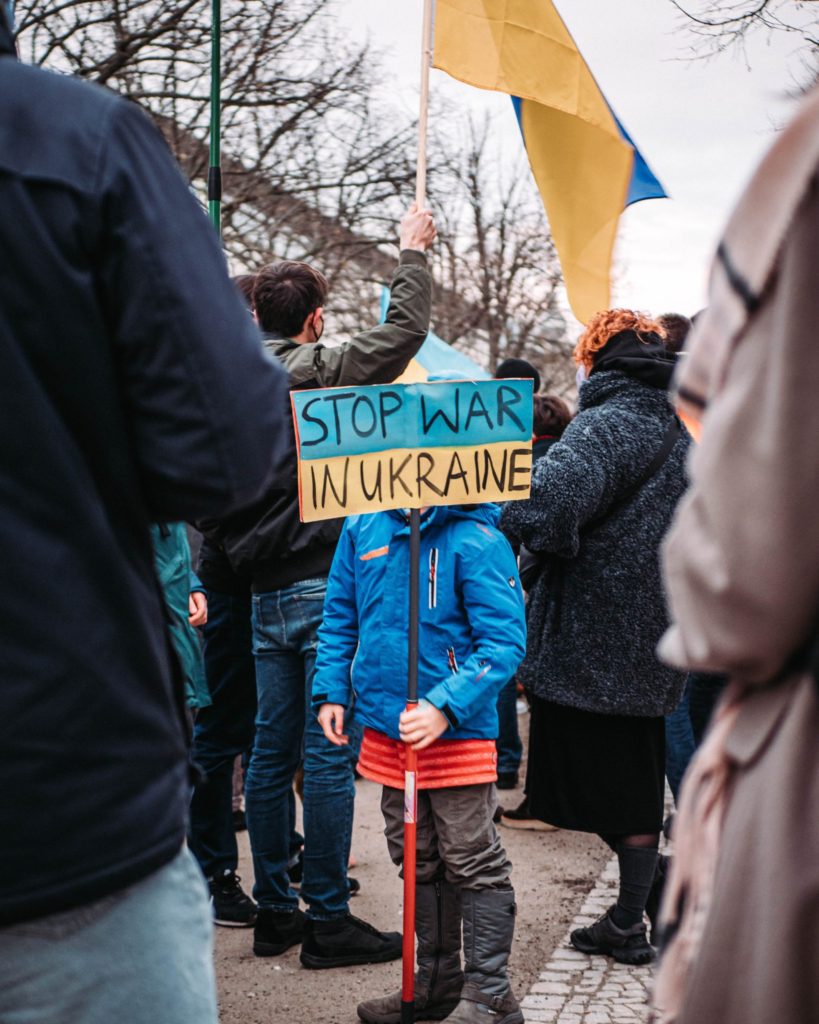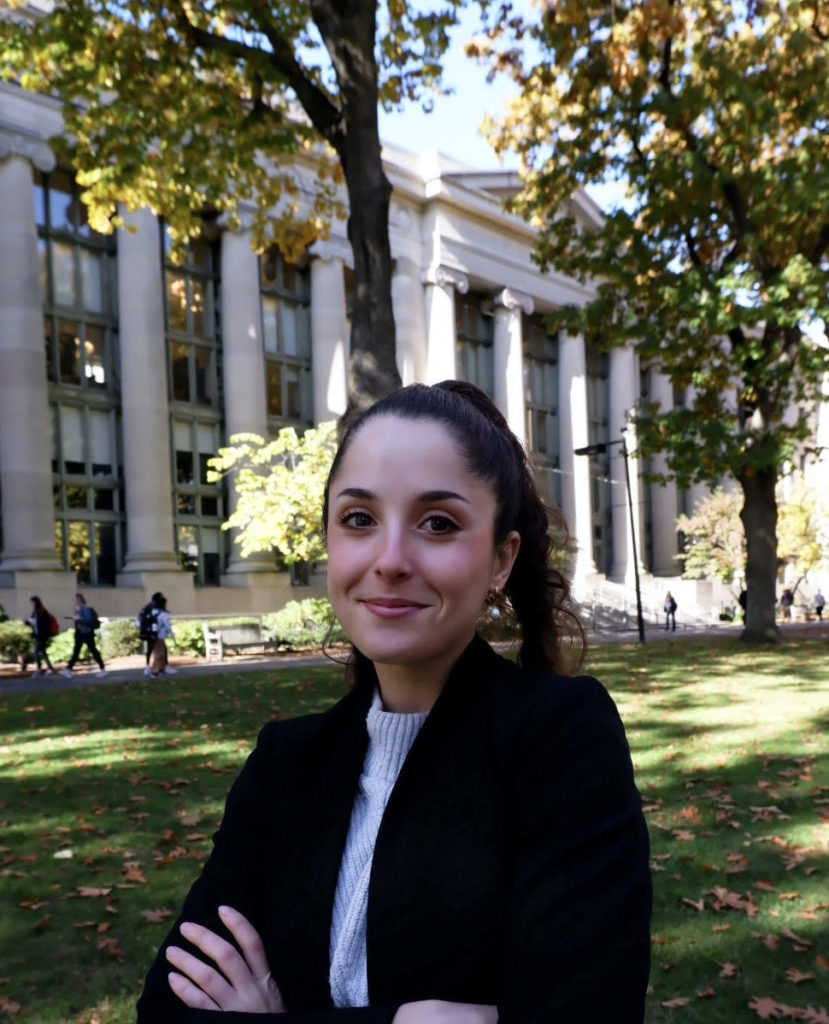By Patrick Maxwell ‘21

Many of the most salient examples of inter-bubble conflicts—in a US context, at least—take the form of “culture war” issues. The opening entry in this blog series referenced an interpersonal conflict stemming from the QAnon phenomenon, and hot-button issues like abortion or climate change certainly qualify as inter-bubble conflicts. The question then arises: are inter-bubble conflicts inherently “political”? And if they are, what does that mean for how ADR professionals can approach them?
Inter-bubble conflicts potentially happen at all levels of society (from the interpersonal to the national) and it would be a mistake to assume that they may be easily mapped onto existing political divides. On the other hand, the factors that create inter-bubble conflicts often also end up creating, or deepening, political divides—suggesting that while inter-bubble conflicts are not inherently political, they may become “politicized” quite easily. In this entry, we’ll explore what that means—for the potential for these conflicts to become entrenched and polarized, and for the application of “conventional” ADR theory and tools to inter-bubble conflicts.
Sacred values and moral communities
But first, let’s introduce some new theory. In his 2012 book The Righteous Mind, social psychologist Jonathan Haidt discussed the concept of “moral communities”—groups of people held together by their shared belief in a common set of moral values and practices. Because most of the moral communities that have existed in history have taken a religious or spiritual form, Haidt refers to this central set of values and practices as “sacred.”1 And typically, moral communities develop incredibly strong taboos against questioning or criticizing the sacred values that form the bedrock of that community.
Crucially, these sacred values do not need to be literally true in order to form the basis for a thriving community. Haidt cites the example of Balinese rice farmers, who developed an extraordinarily complex irrigation system that depended on very precise cooperation from dozens of semi-autonomous extended family units spread over hundreds of square kilometers.2 Normally, one would expect that at least a few families would try to cheat the system and take more than their fair share of water—but each fork in the irrigation system was home to a small shrine, where families who depended on the same water sources worshipped—and worked out problems of water distribution under the watchful eye of the shrine’s god. Regardless of whether the Balinese religion is literally true or not, the shrines helped form moral communities that were able to share water with a minimum of cheating.
Haidt posits that moral communities are, at core, premised on a combination of six deeply-rooted moral imperatives: care, fairness, liberty3, loyalty, authority, and sanctity. Haidt theorizes that liberals and conservatives are fairly predictable in their moral foundations. Liberals tend to emphasize care, fairness, and liberty/agency with less focus on authority, loyalty, and sanctity. Classically, conservatives tend to emphasize all six in relatively equal proportion (although libertarian-oriented conservatives tend—unsurprisingly—to be much more concerned with liberty than anything else, especially liberty from government power).4
A moral community isn’t necessarily a “bubble” in the way this blog series defines them, but these communities typically come with sources of truth (sacred values or principles), authority figures (priests or scholars), and preferred modes of conflict resolution (at least, for members of the community). It should come as no surprise that disputes between different moral communities can quickly take on the features of an inter-bubble conflict.
How inter-bubble conflicts become politicized—and polarized
Remembering the “rights, interests, and power” framework that we discussed in the last entry helps chart the process of how inter-bubble conflicts become politicized and polarized. Recall that electoral politics is, effectively, a power-based system for conflict management, with “power” expressed in terms of number of voters.5 Power-based strategies are unique in that they can be relatively unilateral: rights-based conflict management depends on some level of consensus on applicable rights and principles; interests-based strategies typically depend on some level of willingness to cooperate for mutual benefit. Power-based strategies, by definition, involve the imposition of an agenda on an unwilling opponent, and are therefore quite appealing when there appears to be no common ground with the other parties in a conflict.
For the purposes of this discussion, a conflict has become politicized at the point when it impacts competitions for power within a given political system. However, the difference between politicization and polarization is an important one. A conflict has become polarized when rights- and interests-based strategies cease to be relevant, and power-based strategies take over as the only means to address a conflict.6
That’s a bit abstract, so let’s take the example of the abortion debate within the United States. Abortion, as a topic, has been politicized for decades—having emerged as a national issue alongside contentious debates on contraception and family planning—and abortion restrictions were a feature of party politics throughout the 20th century. But the abortion debate did not become truly polarized until relatively recently. In June of 1972, a majority of both Republicans and Democrats thought that abortion decisions were best addressed by a woman and her doctor; in the 1980s, it was fairly easy to find pro-choice Republicans and pro-life Democrats. However, over the past few decades, the parties have split further apart in terms of their views. Attempts to address the issue through either rights- or interests-based strategies have largely failed to produce any durable resolution. Attempts to repeal Roe v. Wade—which, as a Supreme Court decision, should have been the final word from a rights-based perspective—are a unifying force for the American political right. And any interests-based solutions must contend with the fundamental disagreement over whether an unborn embryo can have any interests at all.
The abortion debate—and the broader American culture war of which it is a part—represents a polarized and politicized inter-bubble conflict. Professor Jennifer Reynolds, in her article “Talking About Abortion (Listening Optional),” sums up the dynamic perfectly when she says “People who are engaged in the [abortion] debate therefore must resort to attempting to fix the laws in the hope that their beliefs about the way the world should work will be imposed on everyone. Of course, resolving conflict in this manner leads to inherent instability because the resolution does not (cannot) account for incompatible interests and values.”7 The few remaining rights- and interests-based attempts to address the abortion debate have largely been subsumed into power-based strategies. In 2016, for example, the question of the appointment of conservative Supreme Court Justices swayed a number of pro-life evangelicals to vote for Donald Trump—to, in effect, exert political power over the predominant rights-based method of addressing the abortion issue.
(If you’re still skeptical, just Google “abortion dialogue”—which should, in theory, turn up at least a few examples of interests-based strategies but, in fact, turns up a list of webpages on strategies for persuading voters who are still undecided on the issue.)
Moral communities, polarization, and the limits of conventional ADR wisdom
The different sides of the abortion debate may be described as moral communities locked in a deeply polarized inter-bubble conflict. In terms of Haidt’s core moral imperatives, the “pro-life” side of the debate can best be explained as being based on care (for unborn children) and sanctity (of human life); the “abortion rights” camp is based in liberty/agency (of women as decision-makers on their own behalf) and care (for women’s health). These dynamics—polarization and deeply-held moral values—have serious implications for how an ADR professional might go about attempting to address this conflict.
A central piece of the toolbox of “principled negotiation”—as pioneered in the classic Getting to Yes—is the idea of value creation: that parties in conflict can, instead of fighting each other, invent ways in which each can benefit from the interaction. In principled negotiation, creating value for the other side is assumed to be good, or neutral at worst; it can help incentivize trade-offs, build working relationships, and create ways out of tough disputes. But in a polarized, power-oriented conflict, the parties are very likely to resist a win-win solution. The other side’s gain is your loss, if it means that they have more resources to throw at the fight. (As John McCain learned in 2008, in a polarized conflict, nuanced policy discussions are much less motivating than promises to fight the other guy.) Polarized inter-bubble conflicts thus neutralize, or at least resist, one of the main tools in the “principled negotiation” toolkit.
And the stakes—for individuals and groups—are much higher when moral communities are involved. Earlier, we noted that the central values of a moral community need not be literally true to be valuable—and, indeed, moral communities usually make it taboo to question their core values. Allegiance to those values becomes a core piece of a community’s identity, and so any conflict “resolution” (or even dialogue) other than an outright win might be interpreted as a threat to the community itself. Meanwhile, individuals within the community face obstacles to any personal changes of heart, since doing so could potentially alienate them from their friends or supporters within a community.
What is the way forward?
Despite the challenging and stubborn nature of inter-bubble conflict, there are successful examples of how these conflicts have been managed. The upcoming blog entries will explore what this successful engagement looks like, at the interpersonal, regional, and national levels.
1.Moral communities can center around non-religious beliefs, as well. Marxism, for example, is an explicitly atheist philosophy but carries a core set of “sacred” unifying beliefs in an ideal classless, stateless society.
2. Jonathan Haidt, The Righteous Mind 260 (Pantheon Books, 2012).
3. Or agency—the ability to make choices on one’s own behalf without manipulation by authority figures.
4. Having taken a morality test at Haidt’s website www.YourMorals.org, I can confirm that I fit the profile: as a self-identified progressive, I scored highest on fairness and care, and lowest on authority and sanctity.
5. Elections do blur the lines somewhat. A complex system of rights mediates elections, determining – among other things – whose votes count, and therefore which blocs of people hold power.
6. It’s important to note that power-based strategies aren’t inherently bad or undesirable. Many of the civil rights victories of the 1960s and ‘70s happened as a result of strikes, marches, protests, and voter mobilization – each of which is, in its own way, a mobilization of political power. Power-based strategies can be quite costly, however, since each party is incentivized to devote more and more resources to winning. An example is the growing cost of the power-based conflict of a presidential election; the total cost of the 1988 election between George H.W. Bush and Michael Dukakis was $807 million, compared to the 2016 election’s price tag of nearly $1.6 billion. (Prices adjusted for inflation. Source: https://howmuch.net/articles/how-much-us-presidents-spent-campaign)
7. Jennifer Reynolds, Talking About Abortion (Listening Optional), 8 Tex. A&M L. Rev. 141, 152 (2020). Reynolds’ article is a thoughtful examination about the necessity—and difficulty—of applying ADR tools to the polarized abortion debate.

 Patrick Maxwell is a JD/MA candidate at Harvard Law School and the Fletcher School at Tufts University, where he focuses on conflict resolution, conflict analysis, and international humanitarian law.
Patrick Maxwell is a JD/MA candidate at Harvard Law School and the Fletcher School at Tufts University, where he focuses on conflict resolution, conflict analysis, and international humanitarian law.






